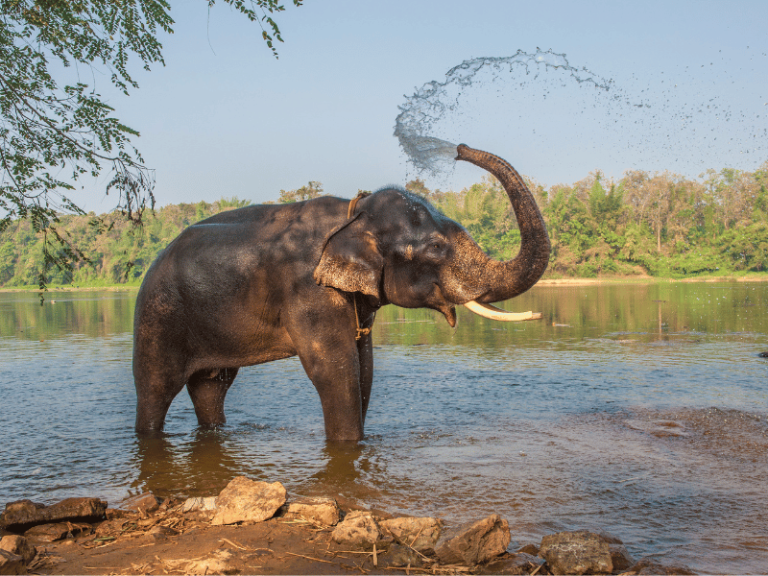Among the exotic animals from around the world at the zoo, the elephant is considered the “patriarch” of the family. Its large body and dignified, seasoned demeanor give it a certain elder-like presence. It constantly moves its heavy frame, swaying its head and ears, sometimes strolling around the exercise yard. With its long trunk, it either picks up grass from the ground or pushes a fallen tree trunk. When the weather is hot, it even takes a dip in the swimming pool.
We often see elephants using their long trunks to suck up water and spray it on themselves. It’s curious, isn’t it? Aren’t they afraid of the water getting into their lungs? No, elephants won’t do something that would harm themselves. Although their trachea and esophagus are connected, there is a piece of cartilage above the esophagus at the back of the nasal cavity. When an elephant sucks water with its trunk, the water enters the nasal cavity. Due to the control of the central nervous system in the brain, the muscles in the throat contract, causing the piece of cartilage above the esophagus to temporarily cover the trachea. This allows the water to enter the esophagus instead of the trachea, thus preventing it from getting into the lungs connected to the trachea. Once the water is expelled, the cartilage automatically opens again to allow normal breathing.

